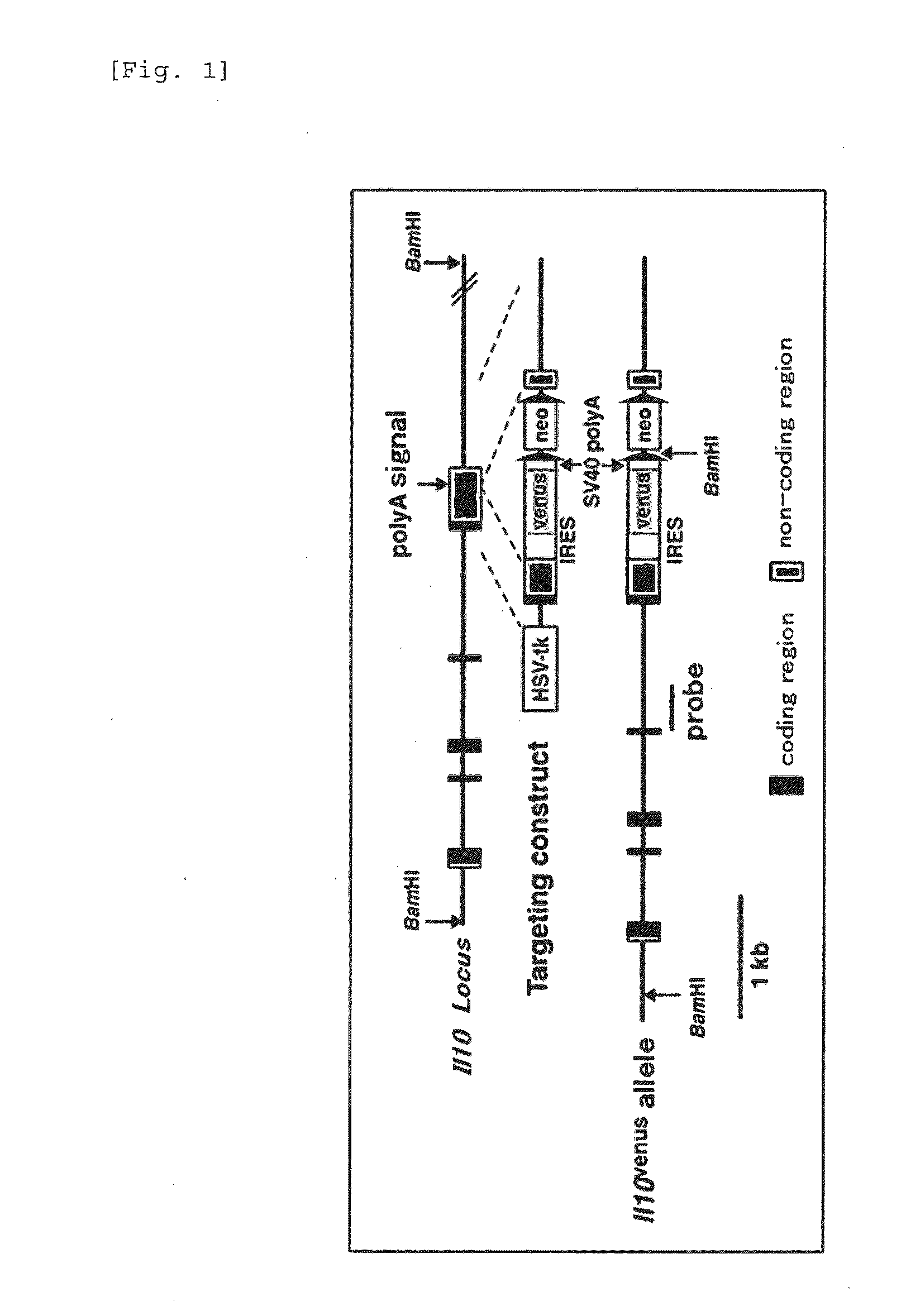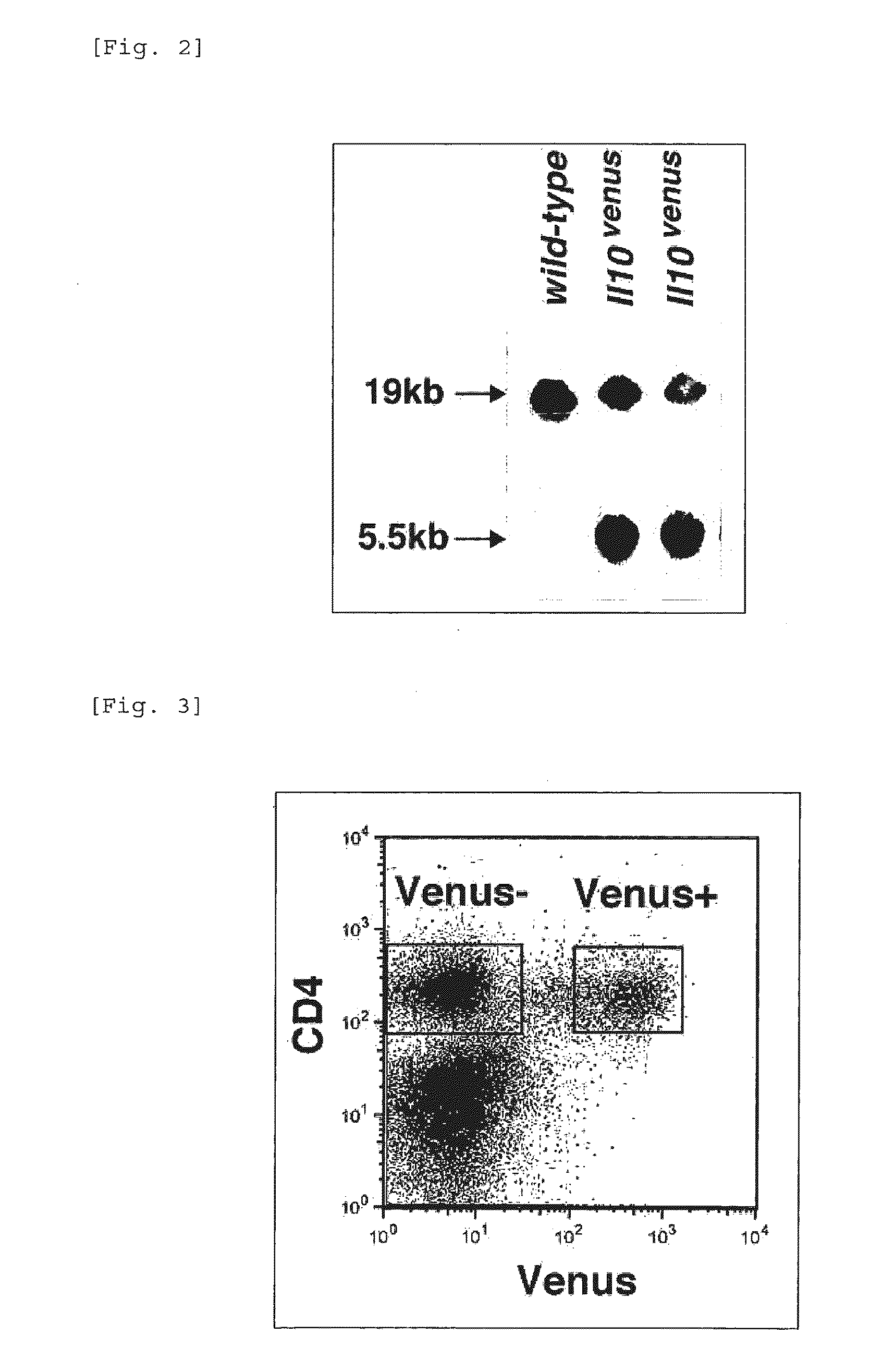Composition for inducing proliferation or accumulation of regulatory t cells
a technology of regulatory t cells and compositions, applied in immunological disorders, metabolism disorders, antibody medical ingredients, etc., can solve the problems of unclear bacteria species, still unclear immune system, etc., to suppress immunological rejection in organ transplantation, healthy individuals can ingest the composition easily and routinely, and suppress the effect of immune system in living organisms
- Summary
- Abstract
- Description
- Claims
- Application Information
AI Technical Summary
Benefits of technology
Problems solved by technology
Method used
Image
Examples
example 1
[0259]First, it was investigated whether or not accumulation of regulatory T cells (Treg cells) in the colonic lamina propria was dependent on commensal bacteria. Specifically, lymphocytes were isolated from peripheral lymph nodes (pLN) of Balb / c mice bred in the absence of specific pathogenic bacteria (SPF) or from lamina propria of the colon or the small intestine (SI) of the mice. The CD4 and Foxp3 were stained by antibodies. Then, the ratio of Foxp3+ cells in CD4+ lymphocytes was analyzed by flow cytometry. FIG. 5 shows the obtained results. As is apparent from the results shown in FIG. 5, it was found that Foxp3+ Treg cells were present at a high frequency in the lamina propria of the gastrointestinal tracts, especially in the colonic lamina propria, of the mice kept under the environment free from specific pathogenic microorganisms (SPF). In addition, it was also found that the number of the Foxp3+ Treg cells in the colonic lamina propria gradually increased up to three months...
example 2
[0260]Next, it was investigated whether or not the temporal accumulation of the Treg cells in the colon as found in Example 1 had a relationship with the colonization of intestinal commensal microbiota. Specifically, the expression of CD4 and the expression of Foxp3 in lymphocytes isolated from the small intestine, the colon, and the peripheral lymph nodes of mice bred under a germ-free (GF) or SPF environment (8 weeks old: Balb / c mice, IQI mice, and C57BL / 6 mice) were analyzed. Similar results were obtained in three or more independent experiments. FIGS. 6 and 7 show the obtained results. Note that, in FIG. 7, each white circle represents the absolute number of CD4+ Foxp3+ cells in an individual mouse, and the error bars represent standard deviations (SDs).
[0261]In addition, lamina propria lymphocytes were collected from SPF mice and GF mice (Balb / c mice or C57BL / 6 mice). CD4 and Foxp3 were stained with antibodies. Then, the lamina propria lymphocytes were analyzed by FACS. FIG. 8 ...
example 3
[0267]Next, it was directly checked whether or not the decrease in the number of the Treg cells in the colonic lamina propria of the GF mice shown in Example 2 was attributed to the absence of microbiota. Specifically, a fecal suspension of B6 SPF mice purchased from The Jackson Laboratory was orally administered to GF-IQI mice (conventionalization). Three weeks after the administration, lymphocytes were isolated from the colonic lamina propria, and the expression of Foxp3 in CD4+ lymphocytes was analyzed. FIGS. 10 and 11 show the obtained results. Note that each white circle in FIG. 11 represents the absolute number of CD4+ Foxp3+ cells in an individual mouse, the error bars represent standard deviations (SD), * indicates that “P+ Treg cells in the colonic lamina propria, while the accumulation of the Treg cells in the small intestinal lamina propria had a different mechanism.
PUM
| Property | Measurement | Unit |
|---|---|---|
| transit time | aaaaa | aaaaa |
| boiling point | aaaaa | aaaaa |
| resistance | aaaaa | aaaaa |
Abstract
Description
Claims
Application Information
 Login to View More
Login to View More - R&D
- Intellectual Property
- Life Sciences
- Materials
- Tech Scout
- Unparalleled Data Quality
- Higher Quality Content
- 60% Fewer Hallucinations
Browse by: Latest US Patents, China's latest patents, Technical Efficacy Thesaurus, Application Domain, Technology Topic, Popular Technical Reports.
© 2025 PatSnap. All rights reserved.Legal|Privacy policy|Modern Slavery Act Transparency Statement|Sitemap|About US| Contact US: help@patsnap.com



